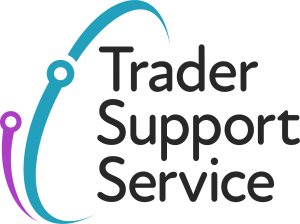Sometimes an Entry Summary Only (ENS Only) Declaration will be required. This video explains the reasons and stipulations when that is appropriate, and how to complete an ENS Only Declaration.
00:00 – Welcome to this overview of the Trader Support Service portal and how to complete an Entry Summary, Safety and Security, ENS only declaration. Please note that as a haulier, you need to ensure that you use the ENS only journey while moving goods that are either going to be moved under an FFD declaration or for other selectable reasons, such as an EIDR or SFD using systems outside of TSS. It is important to confirm with the trader that they need, or prefer, to use this solution before completing your ENS. You need to be logged into the Trader Support Service portal to create an ENS only journey. Navigate down into the declarations to start a declaration and select Start an Entry Summary Declaration or ENS. If required, use the ENS data guide that is available on the Northern Ireland Customers and Trade Academy website via the links. Enter the identity number of the transport. Add the conveyance reference number if required for this movement. Add the nationality of means of transport, typically United Kingdom if you’re moving goods from Great Britain to Northern Ireland. Add in the associated carrier EORI which, where publicised, will show the trader name underneath. If your haulier is different to the carrier, then enter the haulier EORI number here.
01:28 – You must add the expected arrival date and time for the journey, which should be not more than 14 days into the future, or in the past. A notification will be presented if the selected date and time is outside that time period. Select the port of arrival. Enter the seal number, if required, or add no seal. The route will default from GB to Northern Ireland. Add the place of loading and the place of unloading and select the transport charges from the options presented. Once the header level information has been added, select Save as Draft or move directly to Creating Consignments. Once the ENS header level details have been added, navigate down to the bottom of the page and create a new consignment. This will create a new consignment with a unique reference number starting with DEC. And it links back to the entry summary declaration that we’ve just created. The question relating to Does This Consignment Contain Goods Subject to Control, Licence, or Certification is applicable when doing a simplified declaration. In this example, I’m going to select no. Select yes to confirm. Next to it, we have the ENS only reason field. Please ensure you select the correct option here to ensure only an ENS is generated. When the ENS only reason is selected, no simplified frontier declaration will be created as a result. If you are completing an ENS for consignment that is moving under a full frontier declaration, please select the Your ENS Relates to the Full Frontier Declaration Completed Within TSS. It is important to remember to select this option if your importer is moving goods under FFD route. If you do not do so, you could run the risk of duplicate SFD declaration in some cases.
03:34 – There are other valid reasons why you might want to select an ENS only reason. One of the most relevant ones, beside the full frontier declaration option, might be I’m transporting empty container trailer, van, or lorry under a contract of carriage, which requires a safety and security declaration for GVMS. You can use this option for empties to be transported back without any customs declaration. In the Goods Information section, add the associated transport document reference number, the goods description. You can also add a trader reference which is there for your use and is there to help you find the declarations more easily. Add the associated details relating to the consignor, the consignee, the importer, and the exporter. And note that the names of the traders are now actually presented underneath once you have entered the details. Once the consignment details have been added, select Save. If you do select yes to the Consignment Contains Goods Subject to Control, Licence, or Certification, then additional fields are also presented in the Goods Information section relating to the goods domestic status and also the customs warehouse identifier, supervising customs office, and declaration unique consignment reference.
05:03 – From the ENS header level, if you have created a Consignment First ENS only declaration, it will need to be linked to your ENS header before submitting using the Associate Consignments button. Once all the details on the ENS header and consignment have been verified, use the Submit button to submit the ENS declaration which, following processing, will generate an ENS movement reference number. A notification is presented to confirm that no simplified frontier declaration will be generated after completion of this process, and the status field moves to submitted and then processing. Once processed, and the status moves to authorised for movement, then the movement reference number will be presented to you on the declaration level here. Where the ENS only reason is for an FFD movement, then you will need this ENS movement reference number and the FFD MRN following payment by the trader to complete the GMR on GVMS.

